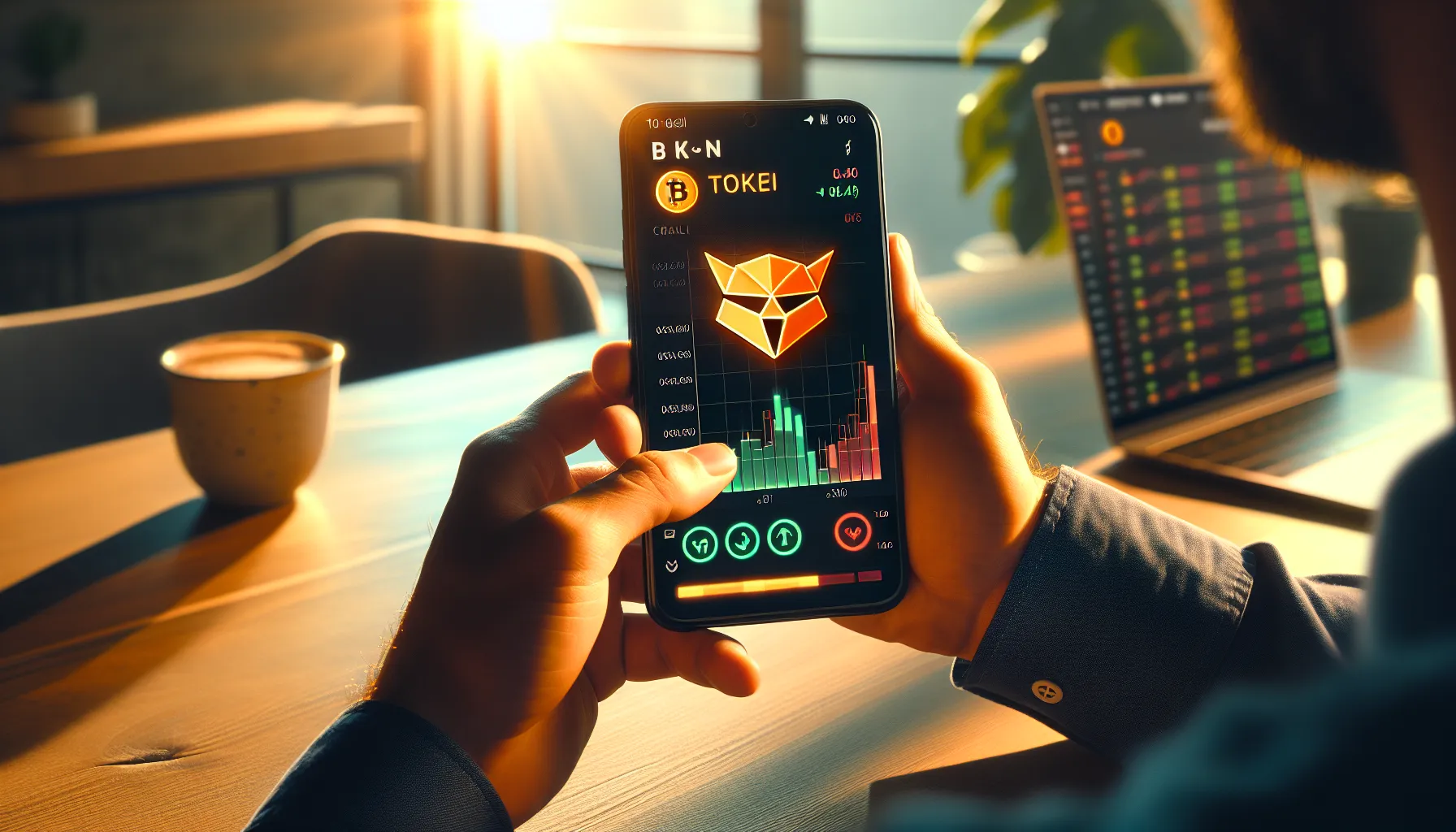Floki Inu Buy or Sell: Informed Investment Guide
You’re staring at the Floki Inu chart again, aren’t you? That erratic line bouncing up and down, making your heart race with every percentage point movement. I get it, meme coins have this strange pull that traditional investments just don’t have. The promise of explosive gains mixed with the fear of catastrophic losses creates a cocktail of emotions that keeps you glued to your screen.
But here’s the thing: emotion is the worst advisor when real money sits on the line. Whether you’re considering your first position in Floki Inu or wondering if it’s time to cut your losses and run, you need a framework that goes beyond Twitter hype and Reddit speculation. This isn’t about crystal balls or get-rich-quick fantasies. It’s about understanding what you’re actually buying into, recognizing the signs that matter, and making decisions based on evidence rather than excitement.
I’ve watched countless traders jump into meme coins at the peak of euphoria, only to watch their portfolios bleed out during the inevitable corrections. And I’ve also seen patient investors who did their assignments catch significant upswings by entering at the right moments. The difference? They asked the hard questions before clicking that buy button.
Key Takeaways
- Deciding whether to buy or sell Floki Inu requires analyzing its ecosystem development, community strength, and competitive position rather than relying on social media hype.
- Floki Inu distinguishes itself from pure meme coins by building utility products like Valhalla (metaverse game), FlokiFi (DeFi platform), and NFT marketplaces, though adoption remains uncertain.
- Risk management is critical when investing in Floki Inu—limit meme coin exposure to 5% or less of your crypto portfolio and set clear exit criteria before emotions take over.
- Warning signs to sell include declining social media engagement, slowing development activity, exchange delistings, and large token holders moving assets to exchanges.
- Floki Inu’s price depends heavily on overall crypto market sentiment and Bitcoin’s performance rather than project-specific developments alone.
- Position sizing and disciplined profit-taking strategies matter more than price predictions when navigating the volatility of Floki Inu and similar meme coins.
What Is Floki Inu and Why Does It Matter?

Floki Inu emerged in 2021, riding the wave of dog-themed cryptocurrencies that followed Dogecoin and Shiba Inu. Named after Elon Musk’s Shiba Inu dog, Floki positioned itself not just as another meme coin but as a project with actual utility aspirations. That distinction matters more than you might think.
Unlike pure meme coins that exist solely as speculative vehicles, Floki has built out several components in its ecosystem. The project includes FlokiFi (a DeFi platform), Valhalla (a play-to-earn metaverse game), FlokiPlaces (an NFT and merchandise marketplace), and the University of Floki (educational content). Whether these products gain meaningful adoption is debatable, but their existence signals intent beyond just riding social media trends.
Why should you care about any of this? Because it affects your risk profile. A meme coin with zero utility lives or dies entirely on sentiment and hype cycles. Once the social media buzz fades, there’s nothing underneath to support the price. A project attempting to build real products, even if those products are still developing, has at least a theoretical path to value creation that doesn’t depend solely on the next viral tweet.
Floki also represents a specific tier of cryptocurrency: it’s not Bitcoin, it’s not Ethereum, and it’s not even in the same category as established altcoins with proven technology. It sits in that volatile middle ground where projects either break through to mainstream adoption or fade into the cemetery of forgotten tokens. Your decision to buy or sell needs to account for that fundamental uncertainty.
Current Market Performance of Floki Inu
Price Trends and Historical Performance
Floki’s price history reads like a thriller novel with more plot twists than most investors can stomach. The token launched in mid-2021 and experienced its first major rally in late 2021 when the broader meme coin market went parabolic. Like most tokens in this category, it then surrendered the majority of those gains during the 2022 bear market.
What’s interesting about Floki’s trajectory is its resilience compared to many meme coins that launched around the same time. While dozens of dog-themed tokens disappeared completely, Floki maintained an active trading presence and periodically generated new waves of buying interest. This doesn’t make it a safe investment by any stretch, but it does suggest a core base of holders who believe in the project’s longer-term potential.
Technical analysis on Floki presents challenges because of its volatility. Traditional indicators often give false signals in meme coin markets where sentiment shifts can create 50% moves in either direction within days. You can’t rely on moving averages and support levels the way you might with more stable assets. Instead, you need to watch for sustained trends that last weeks rather than days, those are more likely to indicate genuine shifts in market sentiment rather than temporary spikes driven by social media chatter.
The token has shown a pattern of explosive rallies followed by extended consolidation periods. If you’re a momentum trader, those rallies offer opportunity. If you’re a long-term holder hoping for steady appreciation, Floki’s volatility will test your conviction repeatedly.
Trading Volume and Market Capitalization
Trading volume tells you a lot about whether a cryptocurrency has real market interest or just speculative froth. Floki typically maintains respectable daily trading volumes relative to its market cap, which indicates ongoing liquidity. This matters practically, when you decide to sell, you want to know there are buyers on the other side without massive slippage eating into your exit price.
Market capitalization gives you context for where Floki sits in the broader crypto hierarchy. At various points, it’s ranked somewhere between the top 100 and top 200 cryptocurrencies by market cap. That positioning means it’s achieved more traction than the vast majority of tokens but still carries significant risk compared to top-20 projects.
Here’s what you need to watch: changes in the relationship between volume and price. When volume increases substantially on price advances, that suggests genuine buying interest. When prices rise on declining volume, you’re looking at a weak rally that’s likely to reverse. Similarly, heavy volume on price declines indicates serious distribution, long-term holders are exiting, and that’s a warning sign you shouldn’t ignore.
Key Factors to Consider Before Buying Floki Inu
Utility and Ecosystem Development
The critical question isn’t whether Floki has announced products, it’s whether those products are gaining actual users. Anyone can create a whitepaper promising revolutionary platforms. Execution is what separates projects that survive from those that don’t.
Valhalla, Floki’s play-to-earn metaverse game, represents one of the more tangible utility cases. Gaming in the crypto space has shown it can generate real engagement when done well. But you need to assess whether Valhalla offers compelling gameplay that would attract users even without the crypto element. If people play solely for token rewards rather than genuine entertainment value, that’s an unsustainable model that collapses once rewards dry up or token prices decline.
FlokiFi’s DeFi products face intense competition from established platforms. Unless Floki offers meaningfully better rates, lower fees, or unique features, there’s limited reason for users to move their assets from proven platforms to a newer, riskier alternative. Check whether these products are seeing actual TVL (total value locked) growth or just stagnant numbers that suggest the broader market isn’t interested.
The education initiative sounds noble but rarely translates to token value. Educational content is widely available for free across the crypto space, so unless Floki creates something genuinely superior, this piece of the ecosystem won’t drive your investment returns.
Community Support and Social Media Presence
For meme-adjacent tokens, community strength isn’t just nice to have, it’s essential for survival. Floki has cultivated a notably active community across Twitter, Telegram, and Reddit. These communities organize grassroots marketing campaigns, create content, and generate ongoing attention for the project.
But you need to distinguish between authentic community engagement and manufactured hype. Look for discussions that go beyond price predictions and moon memes. Are community members actually using Floki’s products? Are they providing constructive feedback? Do discussions address real challenges the project faces, or is everything relentlessly positive regardless of circumstances?
Social media metrics can be misleading. Raw follower counts and engagement numbers can be artificially inflated. What matters more is the quality of discourse and whether the community can sustain interest during down markets. Projects with genuine communities maintain engagement even when prices are declining. Projects built solely on hype see their communities evaporate the moment momentum shifts.
You should also watch for organized marketing campaigns. Floki has conducted high-visibility advertising, including physical billboards and transit ads in major cities. This aggressive marketing indicates the team has funding and commitment, but it also raises questions about whether they’re prioritizing marketing over product development. That balance tells you something important about project priorities.
Competition in the Meme Coin Market
Floki operates in one of the most crowded segments of the cryptocurrency market. Dogecoin still holds the crown as the original meme coin with name recognition that extends into mainstream culture. Shiba Inu carved out its own massive following and market cap. Beyond these leaders, dozens of other dog-themed, cat-themed, and animal-themed tokens compete for the same speculative capital.
Market share in the meme coin space is brutal and unforgiving. When capital rotates into meme coins during bullish sentiment, it typically flows first to established names like Dogecoin and Shiba Inu. Secondary tokens like Floki receive spillover capital, if there’s enough enthusiasm to go around. During bear markets or cooling periods, that capital evaporates quickly, and lower-tier tokens suffer disproportionately.
You’re essentially betting that Floki can maintain relevance in a market where attention spans are measured in days and new tokens launch constantly. Each new meme coin that catches viral attention pulls potential buyers away from existing tokens. This isn’t a winner-takes-all market, but it’s definitely a winner-takes-most environment where the top few projects capture the majority of value.
Warning Signs That May Indicate It’s Time to Sell
Knowing when to exit an investment is often more important than knowing when to enter. With volatile assets like Floki, the difference between taking profits and watching them evaporate can happen in a matter of days.
First warning sign: declining social media engagement without a corresponding price bottom. If Twitter mentions are dropping, Telegram groups are less active, and Reddit discussions are dwindling, but the price hasn’t yet fully corrected, you’re likely looking at the early stages of interest decay. The price often lags social sentiment by days or weeks.
Second warning sign: development activity slowing down. Check the project’s GitHub repositories (if publicly available), announcements about product updates, and team communication frequency. When teams go quiet or push back promised releases repeatedly, that often signals internal problems. Projects that are building actively communicate regularly about progress, challenges, and next steps.
Third warning sign: exchange delistings. If major exchanges begin removing Floki from their platforms, that’s a severe red flag indicating regulatory concerns, insufficient trading volume, or other fundamental problems. Liquidity dries up quickly once delistings begin, making it harder to exit at reasonable prices.
Fourth warning sign: major token holders beginning to distribute. Blockchain analysis tools can show you when wallets holding significant percentages of supply start moving tokens to exchanges. Large holders usually have better information and insights than retail investors. When they’re heading for the exits, you should at least understand why before deciding to stay.
Fifth warning sign: the broader meme coin market turning bearish while Floki holds relatively well. This might sound counterintuitive, but when the entire sector is declining and one token seems to lag the move down, it often just means it hasn’t caught down yet. Correlation eventually reasserts itself in speculative markets.
You also need to recognize personal warning signs. If you’re checking prices obsessively, losing sleep over portfolio fluctuations, or feeling anxiety about your position, that’s your psychology telling you the position size is too large for your risk tolerance. Sometimes selling isn’t about the asset’s fundamentals, it’s about your own mental well-being.
Expert Opinions and Price Predictions for Floki Inu
Price predictions for meme coins should come with flashing warning labels. The analysts making these predictions have no special crystal ball, and their track records on speculative assets are generally poor. That said, understanding the range of opinions helps you gauge market sentiment.
Bullish analysts point to Floki’s ecosystem development, marketing efforts, and community strength as factors that could drive the token to new highs during the next major crypto bull market. Some predictions suggest multiples of current prices if Bitcoin and Ethereum enter strong bull phases and speculative capital flows back into altcoins and meme coins.
Bearish analysts counter that the meme coin trend has largely played out, newer narratives like AI tokens are capturing speculative interest, and projects like Floki face an uphill battle maintaining relevance in an increasingly crowded market. They point out that utility claims often fail to materialize into meaningful adoption, leaving these tokens dependent entirely on hype cycles that inevitably end.
Realistic analysts, and this is where you should focus your attention, emphasize that Floki’s future price depends almost entirely on factors outside its control: overall crypto market sentiment, Bitcoin’s price action, regulatory developments, and whether retail investors return to crypto in force during the next cycle. Floki-specific developments matter far less than these macro factors.
I’ve found that the most honest assessment is this: if you believe we’re entering an extended crypto bull market where speculative assets will see strong inflows, Floki has as good a chance as any meme coin to capture some of that capital. If you think the market will remain range-bound or bearish, there are dozens of better places to park capital than speculative meme tokens.
Avoid analysts who give specific price targets with false precision. Anyone telling you Floki will hit exactly $0.0005 by March 2026 is making up numbers. The future is unknowable, and meme coin prices are particularly unpredictable given their sentiment-driven nature.
Risk Management Strategies for Floki Inu Investors
If you decide to buy Floki even though the considerable risks, position sizing becomes the single most important decision you’ll make. This isn’t an asset where you should risk significant portions of your portfolio. Even if you’re bullish on the project’s prospects, the volatility and uncertainty demand conservative position sizing.
A reasonable approach: limit meme coin exposure to 5% or less of your total crypto portfolio, and limit your entire crypto portfolio to whatever percentage makes sense for your overall financial situation. Within that meme coin allocation, you might spread across two or three different projects rather than concentrating everything in Floki. This gives you exposure to the potential upside while ensuring that even a complete loss wouldn’t devastate your finances.
Stop-loss strategies are tricky with volatile assets like Floki. Traditional tight stop-losses will get triggered by normal price fluctuations, taking you out of positions before meaningful moves. Wider stop-losses give you breathing room but risk larger losses. One approach: set mental stop-losses based on percentage drawdowns from your entry or from recent peaks, then actually execute those stops when triggered. The discipline to follow through matters more than the specific percentage you choose.
Taking profits systematically removes emotion from the equation. If Floki doubles from your entry, consider taking out your initial investment. This creates a “free ride” position where you’re playing with profits rather than your original capital. If it doubles again, take out another portion. You’ll never maximize gains with this approach, but you’ll lock in real returns rather than riding positions all the way back down.
Diversification beyond meme coins provides essential balance. Your portfolio should include assets with fundamentally different risk profiles, Bitcoin, Ethereum, traditional stocks, bonds, real estate, whatever matches your situation. The point is ensuring that your Floki position, regardless of outcome, can’t seriously damage your financial health.
Finally, maintain an exit thesis that’s separate from your entry thesis. Before buying, write down specifically what conditions would cause you to sell. This prevents you from moving goalposts as circumstances change and rationalization takes over. Maybe your exit triggers are specific technical levels, fundamental changes in the project, shifts in competitive position, or simply a predetermined holding period. Whatever they are, commit to them before emotions get involved.
Conclusion
So here’s where we land: Floki Inu is neither a guaranteed path to wealth nor an obvious scam to avoid at all costs. It’s a speculative asset with real risks, genuine community support, developing utility that may or may not gain traction, and price action that will continue to test your emotional resilience.
Your decision to buy or sell shouldn’t hinge on anyone else’s opinion, including mine. It should come from an honest assessment of your risk tolerance, your portfolio construction, your investment timeline, and your conviction about crypto market direction over your intended holding period.
If you do buy, keep the position small enough that you can sleep at night when it drops 40% in a week, because that will happen, probably multiple times. If you’re already holding and wondering whether to sell, review those warning signs we covered and be honest about whether your thesis for holding still makes sense or whether you’re just hoping to get back to breakeven.
The investors who succeed with speculative assets like Floki aren’t necessarily the smartest or most informed. They’re usually the ones with the clearest rules, the most disciplined execution, and the emotional stability to stick with their plan when fear and greed are screaming at them to do something different.
You can’t control where Floki’s price goes. But you can control your position size, your entry and exit criteria, and your emotional response to volatility. Focus on what you can control, accept the uncertainty of what you can’t, and make your decision based on evidence rather than hope.
Frequently Asked Questions
Should I buy or sell Floki Inu right now?
The decision depends on your risk tolerance, portfolio allocation, and market outlook. Floki is highly speculative, so limit exposure to 5% or less of your crypto portfolio and base your decision on evidence rather than hype or emotion.
What makes Floki Inu different from other meme coins?
Unlike pure meme coins, Floki has built an ecosystem including FlokiFi (DeFi platform), Valhalla (play-to-earn game), FlokiPlaces (NFT marketplace), and educational content. These utility components provide a theoretical path to value beyond social media trends.
How volatile is Floki Inu compared to Bitcoin?
Floki Inu is significantly more volatile than Bitcoin, with potential 50% price swings in either direction within days. Traditional technical indicators often give false signals, making it unsuitable for risk-averse investors seeking steady appreciation.
What are the warning signs to sell Floki Inu?
Key warning signs include declining social media engagement without price bottoming, slowing development activity, exchange delistings, major token holders distributing to exchanges, and your own anxiety about position size affecting mental well-being.
Can Floki Inu reach $1 in the future?
Reaching $1 is mathematically improbable given Floki’s token supply and market cap requirements. Price predictions for meme coins are highly unreliable, and future value depends primarily on overall crypto market sentiment rather than project-specific developments.
How much of my portfolio should I allocate to meme coins like Floki?
Financial experts recommend limiting meme coin exposure to 5% or less of your total crypto portfolio. Consider spreading this allocation across multiple projects rather than concentrating in one token to manage risk effectively.







 Bitcoin
Bitcoin  Ethereum
Ethereum  Tether
Tether  XRP
XRP  USDC
USDC  TRON
TRON  Lido Staked Ether
Lido Staked Ether  Dogecoin
Dogecoin  Figure Heloc
Figure Heloc  Cardano
Cardano  WhiteBIT Coin
WhiteBIT Coin  Bitcoin Cash
Bitcoin Cash  Wrapped stETH
Wrapped stETH  Wrapped Bitcoin
Wrapped Bitcoin  USDS
USDS  Wrapped eETH
Wrapped eETH  Binance Bridged USDT (BNB Smart Chain)
Binance Bridged USDT (BNB Smart Chain)  Chainlink
Chainlink  Monero
Monero  LEO Token
LEO Token  WETH
WETH  Zcash
Zcash  Stellar
Stellar  Hyperliquid
Hyperliquid  Coinbase Wrapped BTC
Coinbase Wrapped BTC  Ethena USDe
Ethena USDe  Litecoin
Litecoin  Sui
Sui  Avalanche
Avalanche  Hedera
Hedera  sUSDS
sUSDS  Shiba Inu
Shiba Inu  USDT0
USDT0  Dai
Dai  Canton
Canton  Uniswap
Uniswap  PayPal USD
PayPal USD  Mantle
Mantle  Cronos
Cronos  World Liberty Financial
World Liberty Financial  Toncoin
Toncoin  Ethena Staked USDe
Ethena Staked USDe  Polkadot
Polkadot  USD1
USD1  Aave
Aave  Rain
Rain  Bitget Token
Bitget Token  MemeCore
MemeCore